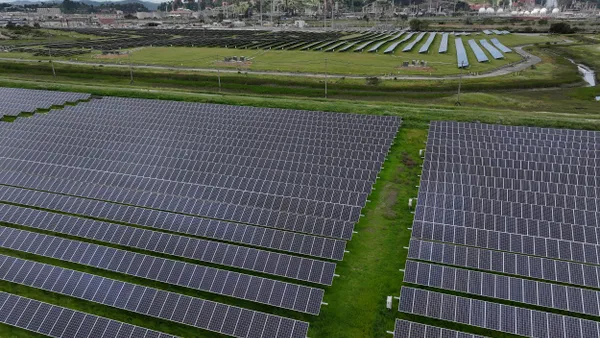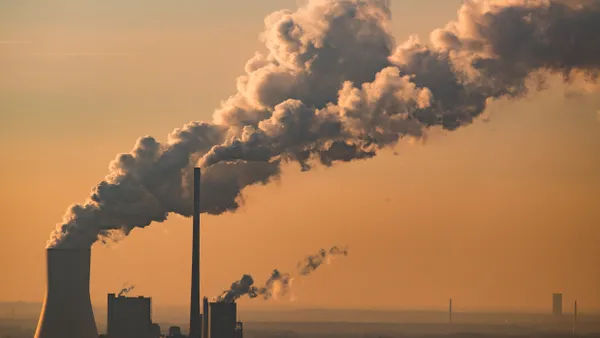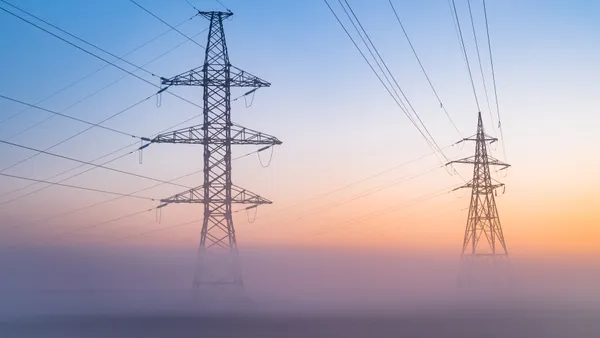Dive Brief:
- Carbon dioxide emissions from the energy sector remained flat worldwide last year, as reductions from the world's largest polluters—China and the United States—helped to offset higher rates in other regions, according to the International Energy Agency.
- New data from the IEA shows global emissions from the energy sector stood at 32.1 gigatonnes in 2016, unchanged from the previous two years.
- IEA said the United States showed the greatest improvement, with carbon dioxide emissions falling 3%, or 160 million (metric) tonnes, while the country's economy grew by 1.6%.
Dive Insight:
Stricter emissions regulations, a decline in the use of coal, cheaper natural and the rise of clean energy have all helped keep global emissions flat since 2014. But the most progress has been made by the U.S., and President Trump's administration is widely expected to issue executive orders this week aimed at rolling back environmental protections which would damage climate efforts.
Watch for more Utility Dive coverage of actions out of the White House: A set of highly-anticipated executive actions could revise or repeal of the Clean Power Plan and end the use of the "social cost of carbon," which requires federal agencies to consider climate impacts when writing new rules.
The U.S. commitment to the United Nations Paris climate accord, which aims to keep global warming below 2 degrees Celsius, is widely seen as vital to the global initiative's success. President Trump vowed to pull out of the climate accord, but Secretary of State Rex Tillerson favors "maintaining a seat" at climate talks.
But at least in recent years, the progress has been apparent. According to the IEA, 2016 emissions in the United States were at their lowest level since 1992, almost a quarter century during which the economy grew by 80%.
“These three years of flat emissions in a growing global economy signal an emerging trend and that is certainly a cause for optimism, even if it is too soon to say that global emissions have definitely peaked,” IEA Executive Director Fatih Birol said in a statement.
The declines are also a sign that market dynamics and tech advancements are having a impact, and are helping separate economic growth from energy emissions, according to Birol. "This is especially true in the United States, where abundant shale gas supplies have become a cheap power source," said Birol.
IEA also noted the increase in global nuclear capacity last year was the highest since 1993: New reactors came online in China, the United States, South Korea, India, Russia and Pakistan. Coal demand fell worldwide but the drop was "particularly sharp" in the United States, the agency said, down 11% last year.
Earlier this year, the U.S. Energy Information Administration said long-term projections indicate renewable energy and natural gas will likely continue to grow regardless of what happens with the Clean Power Plan. The 2017 Annual Energy Outlook reference case — based on existing policies, including the CPP — forecast that wind, solar and natural gas will dominate capacity additions into the next decade, and that coal generation will continue a steady decline.
Without the CPP, coal generation would remain steady through the 2020s, EIA said. The plan, President Obama's signature environmental rule, would have reduced greenhouse gas emissions by 32% from existing power plants.















